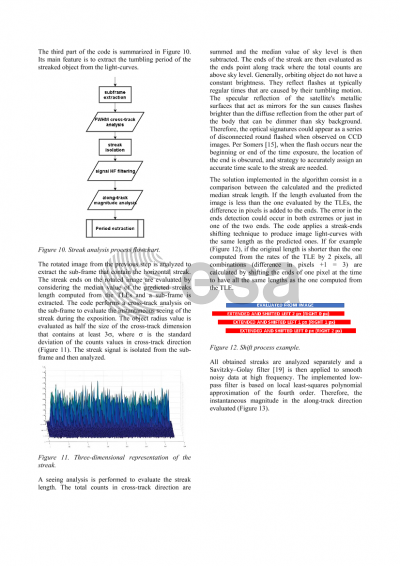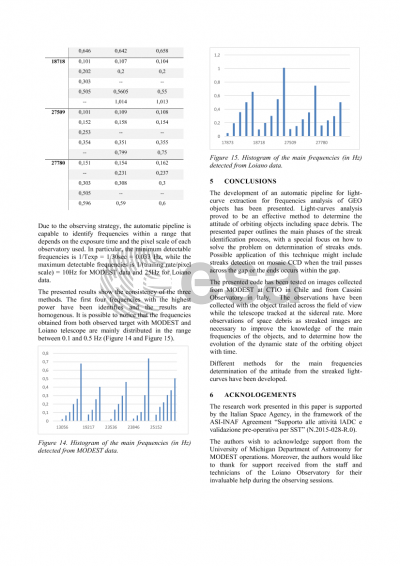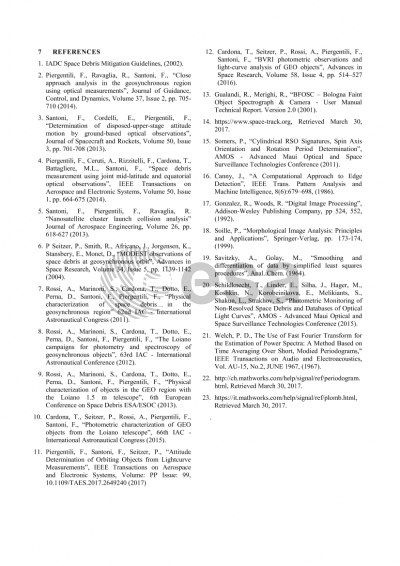Document details

Abstract
Active satellites at Geostationary Earth Orbit (GEO) are typically attitude controlled. This control ceases in the case of loss of control, or when the satellite is moved to a graveyard orbit, and decommissioned. When one of these events occurs, how does the attitude change with time? In this paper, rapid changes in brightness are investigated as possible implication of rapid changes in attitude. The short-term brightness variability of uncontrolled objects at GEO is studied by taking observations while the telescope is tracking at the sidereal rate, and the target is trailed across the field of view (FOV). Analysis of intensity changes along the trail reveals the primary frequencies of the object’s brightness variations on time scales of a second or less. These observations were performed by using:
• The University of Michigan’s 0.6m Curtis-Schmidt telescope located at the Cerro Tololo InterAmerican Observatory (Chile) equipped with a thinned, backside illuminated CCD with 1.45 arc-seconds/pixel and a FOV of 1.6x1.6 deg.
• The 1.5m Cassini telescope in Loiano (Italy), operated by the INAF (National Institute for Astrophysics) Astronomical Observatory of Bologna, equipped with BFOSC (Bologna Faint Object Spectrograph and Camera), a multipurpose instrument for imaging and spectroscopy, with 0.58 arc-seconds/pixel and a FOV of 13x 12.6 arc-min.
Due to the success in the determination of the main frequencies of the objects depends mostly on the accuracy of the measurements of the flash peaks, an automatic pipeline has been developed to process the data. In this paper, an accurate analysis of determining the end of the target streak ends is proposed to avoid systematic error in frequency analysis of the variability of the GEO objects.
Preview









